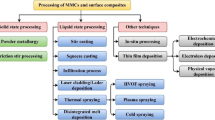Abstract
In this paper, the strength degradation of non-oxide and oxide/oxide fiber-reinforced ceramic-matrix composites (CMCs) subjected to cyclic loading at elevated temperatures in oxidative environments has been investigated. Considering damage mechanisms of matrix cracking, interface debonding, interface wear, interface oxidation and fibers fracture, the composite residual strength model has been established by combining the micro stress field of the damaged composites, the damage models, and the fracture criterion. The relationships between the composite residual strength, fatigue peak stress, interface debonding, fibers failure and cycle number have been established. The effects of peak stress level, initial and steady-state interface shear stress, fiber Weibull modulus and fiber strength, and testing temperature on the degradation of composite strength and fibers failure have been investigated. The evolution of residual strength versus cycle number curves of non-oxide and oxide/oxide CMCs under cyclic loading at elevated temperatures in oxidative environments have been predicted.













Similar content being viewed by others
References
Gonczy, S.T.: Federal Aviation Administration (FAA) airworthiness certification for ceramic matrix composite components in civil aircraft systems. MATEC Web of Conferences. 29, 00002 (2015). doi:10.1051/matecconf/20152900002
Lee, S.S., Zawada, L.P., Staehler, J.M., Folsom, G.A.: Mechanical behavior and high-temperature performance of a woven Nicalon™/Si-N-C ceramic-matrix composite. J. Am. Ceram. Soc. 81, 1797–1811 (1998). doi:10.1111/j.1151-2916.1998.tb02550.x
Bertrand, D.J., Sabelkin, V., Zawada, L., Mall, S.: Fatigue behavior of Sylramic-iBN/BN/CVI SiC ceramic matrix composite in combustion environment. J. Mater. Sci. 50, 7437–7447 (2015). doi:10.1007/s10853-015-9302-8
Ruggles-Wrenn, M.B., Hetrick, G., Baek, S.S.: Effects of frequency and environment on fatigue behavior of an oxide-oxide ceramic composite at 1200°C. Int. J. Fatigue. 30, 502–516 (2008). doi:10.1016/j.ijfatigue.2007.04.004
Mehrman, J.M., Ruggles-Wrenn, M.B., Baek, S.S.: Influence of hold times on the elevated-temperature fatigue behavior of an oxide-oxide ceramic composite in air and in steam environment. Compos. Sci. Technol. 67, 1425–1438 (2007). doi:10.1016/j.compscitech.2006.09.005
Ruggles-Wrenn, M.B., Lanser, R.L.: Tension-compression fatigue of an oxide/oxide ceramic composite at elevated temperature. Mater. Sci. Eng. A. 659, 270–277 (2016). doi:10.1016/j.msea.2016.02.057
Whitworth, H.A.: Evaluation of the residual strength degradation in composite laminates under fatigue loading. Compos. Struct. 48, 261–264 (2000). doi:10.1016/S0263-8223(99)00113-0
Keiji, O.: Prediction of residual tensile strength after fatigue in unidirectional brittle fiber-reinforced ceramic composites. J. Solid Mech. Mater. Eng. 5, 64–74 (2011). doi:10.1299/jmmp.5.64
Shah, A.R., Murthy, P.L.N., Mital, S.K., Bhatt, R.T.: Probabilistic modeling of ceramic matrix composite strength. J. Compos. Mater. 34, 670–688 (2000). doi:10.1177/002199830003400803
Murthy, P.L.N., Nemeth, N.N., Brewer, D.N., Mital, S.: Probabilistic analysis of a SiC/SiC ceramic matrix composite turbine vane. Composites Part B. 39, 694–703 (2008). doi:10.1016/j.compositesb.2007.05.006
Li, L.B.: Modeling the tensile strength of carbon fiber-reinforced ceramic-matrix composites under multiple fatigue loading. Appl. Compos. Mater. 23, 313–336 (2016). doi:10.1007/s10443-015-9462-3
Li, L.B.: Modeling the effect of oxidation on tensile strength of carbon fiber-reinforced ceramic-matrix composites. Appl. Compos. Mater. 22, 921–943 (2015). doi:10.1007/s10443-015-9443-6
Holmes, J.W.: Influence of stress ratio on the elevated-temperature fatigue of a silicon carbide fiber-reinforced silicon nitride composite. J. Am. Ceram. Soc. 74, 1639–1645 (1991). doi:10.1111/j.1151-2916.1991.tb07152.x
McNulty, J.C., Zok, F.W.: Low-cycle fatigue of Nicalon-fiber-reinforced ceramic composites. Compos. Sci. Technol. 59, 1597–1607 (1999). doi:10.1016/S0266-3538(99)00019-6
Li, L.B.: Assessment of the interfacial properties from fatigue hysteresis loss energy in ceramic-matrix composites with different fiber preforms at room and elevated temperatures. Mater. Sci. Eng. A. 613, 17–36 (2014). doi:10.1016/j.msea.2014.06.092
Fantozzi, G., Reynaud, P.: Mechanical behavior of SiC fiber-reinforced ceramic matrix composites. Comprehensive Hard Materials. 345–366 (2014). doi:10.1016/B978–0–08-096527-7.00031-3
Ruggles-Wrenn, M.B., Lee, M.D.: Fatigue behavior of an advanced SiC/SiC ceramic composite with a self-healing matrix at 1300°C in air and in steam. Mater. Sci. Eng. A. 677, 438–445 (2016). doi:10.1016/j.msea.2016.09.076
Li, L.B.: Damage development in fiber-reinforced ceramic-matrix composites under cyclic fatigue loading using hysteresis loops at room and elevated temperatures. Int. J. Fract. 199, 39–58 (2016). doi:10.1007/s10704-016-0085-y
Acknowledgements
The work reported here is supported by the Natural Science Fund of Jiangsu Province (Grant No. BK20140813), and the Fundamental Research Funds for the Central Universities (Grant No. NS2016070). The author thanks the anonymous reviewer and the editor for their valuable comments on an earlier version of the paper.
Author information
Authors and Affiliations
Corresponding author
Rights and permissions
About this article
Cite this article
Longbiao, L. Modeling Strength Degradation of Fiber-Reinforced Ceramic-Matrix Composites Subjected to Cyclic Loading at Elevated Temperatures in Oxidative Environments. Appl Compos Mater 25, 1–19 (2018). https://doi.org/10.1007/s10443-017-9609-5
Received:
Accepted:
Published:
Issue Date:
DOI: https://doi.org/10.1007/s10443-017-9609-5




